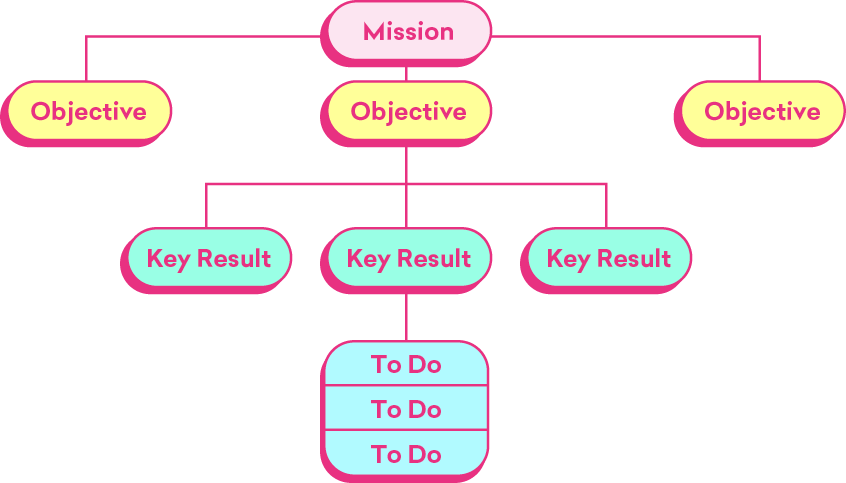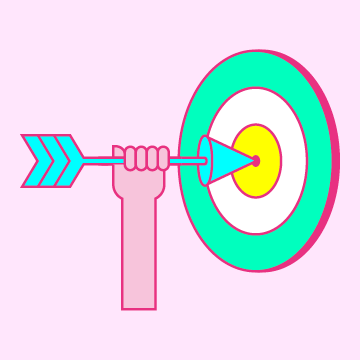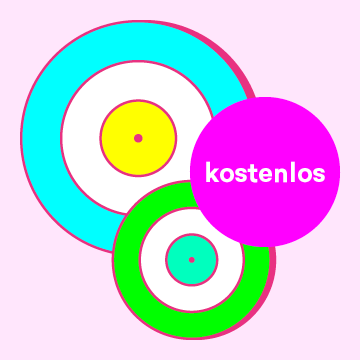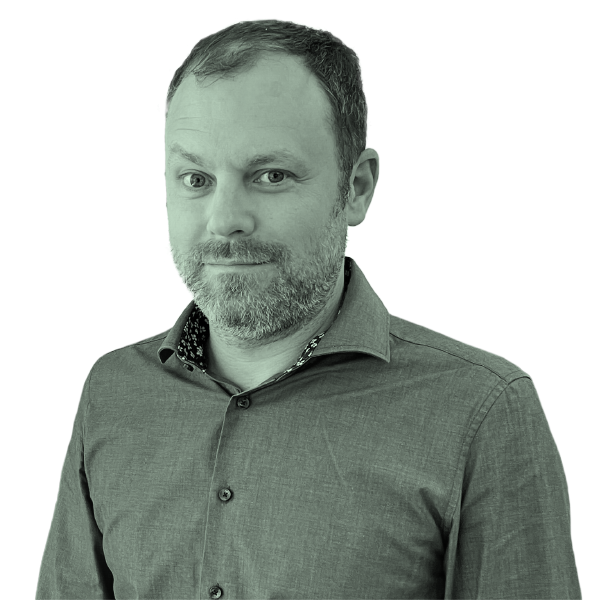OKR – What is it and how does it work?

What exactly are OKRs? In a nutshell, OKR (Objectives and Key Results) is a leadership and goal management framework that is specifically tailored to the ever-changing conditions of our modern working world.
OKR enables organizations to pursue long-term strategic goals while maintaining the flexibility to execute. This is achieved by actively involving employees in the goal-setting process. OKR counters the rigid top-down management approach of the 2000s with a bottom-up perspective that ensures everyone is pulling in the same direction.
Content
- How does OKR work as a framework?
- What are objectives and key results?
- OKR vs. MBO
- How do I formulate OKRs?
- What makes OKR different?
- How does the OKR cycle work?
- OKR as a management method
- Introducing OKR in your company
- Successfully introducing OKR with Wonderwerk
How does OKR work as a framework?
Objectives and Key Results (OKRs) provide a much-needed bridge between corporate strategy and the people who execute it. The popular saying that the left hand does not know what the right hand is doing illustrates why this is necessary: In many organizations, we still see corporate goals that are born in the ivory tower of top management and die there in beauty because they are not anchored in the operational activities of employees.
OKRs, on the other hand, are a holistic method for managing goals and performance at ALL levels of an organization. The method focuses on transparency, consistent communication and personal accountability.
By discussing and reflecting on short, medium, and long-term results at relatively short intervals at all levels, continuous “course corrections” take place.
Objectives and Key Results help companies to
- set a clear strategic focus.
- identify the most important tasks and goals for the company.
- retain good employees in the long term through a motivating work environment and intrinsic motivation.
- uncover weaknesses and potential for improvement in processes.
- use resources as profitably as possible.
- make successes objectively measurable.
- Align the corporate strategy for growth.
- Remain capable of acting despite constantly changing conditions.

What are objectives and key results?
What are objectives and key results?
The two constitutional values that give the OKR method its name are objectives and key results. Objectives are the goals that are not imposed top-down by management, but are defined at every organizational level of the company. For example, there are objectives that are defined at the departmental level, objectives that are formulated at the team level, and goals that each individual employee defines for themselves. Objectives have a qualitative value: What do I want to achieve? Where do I want to go?
Each objective is assigned two to five key results. Key results describe how the objective is to be achieved in concrete terms and how this achievement is to be measured using figures.
OKR versus MBO
OKR as a goal management framework is essentially based on the traditional concept of management by objectives or MBO. Both frameworks create structure through goal setting and provide a yardstick for measuring employee performance. However, while Management by Objectives means “leadership through goal setting” and thus focuses on the quantitative achievement of goals, OKRs focus on the quality of results by concentrating on the process of achieving goals and breaking these qualitative objectives down into quantitative key results.
Another important difference between MBO and OKR lies in the understanding of leadership: While MBO specifies the goals and tasks within the framework of the classic top-down approach and the degree of goal achievement is evaluated at the end of the respective period, we understand “leadership” in the sense of OKR more as empowering teams and employees: They have the opportunity to develop much more and take on more responsibility through ongoing reviews and feedback within the much shorter OKR cycles.
Combined with this modern understanding of leadership, OKR as a framework lays the foundation for a positive culture of error in many organizations, enabling employees to pursue their ideas and develop their visions. This positive culture of error, in turn, creates the ideal conditions for successful innovation management and entrepreneurial spirit within the company (intrapreneurship).
How do I formulate OKRs?
The biggest challenge of OKR (and modern management in general) is setting the right objectives. To prevent management from setting objectives that create obstacles in operations, or the operational level from setting objectives that are not in line with the company’s vision, OKR gives both levels their rights:
Management sets about 40% of the objectives. Based on this 40%, which reflects the company’s long-term strategic direction and philosophy (the so-called long-term goals), employees set the remaining 60% of the company’s goals.
These goals, however, are not yet the targets or key results, but rather the so-called mid-term goals (also known as MOALS). Mid-term goals are medium-term goals, typically set for a one-year period.
MOALS are intentionally ambitious and provide strategic direction. Based on them, the individual organizational levels of the company set their own objectives independently. The objectives are therefore milestones on the way to the mid-term goals.
How do I formulate objectives?
Objectives, just like medium-term goals, can be ambitious, but they should still be achievable within an OKR cycle. To this end, objectives can also be shortened or divided into several phases.
In addition to ambitious but achievable goals, there are also so-called stretch goals. Stretch goals are goals that require a high degree of innovation and/or commitment. They are not unattainable per se, but success is not very likely.
The use of stretch goals should be carefully considered in advance and ideally planned with experts. Depending on the company situation and culture, this type of objective can have both a motivating and an inhibiting effect.
Key results make goals measurable
Key results are specific and time-bound. They are also (and this is important!) measurable.
While mid-term goals and objectives can be formulated in abstract terms, key results MUST be measurable. Their job is to link the milestones (objectives) to concrete metrics. These key figures can be used to check whether the goal has been achieved or to what extent it has been achieved.
In this way, OKRs ensure that both successes and failures are transparent: Specifically formulated key results distribute the fulfillment of objectives across several shoulders, while also linking them to specific tasks for teams and individual employees.
What makes OKR different?
Unlike traditional goal management methods, where strategic goals are set once a year and passed down “downward” according to the waterfall principle, OKR divides goal setting and goal achievement into smaller, more flexible units. This applies not only to the distribution of strategic goals across all organizational levels (see above), but also to a focus on the essentials.
Companies no longer try to implement everything somehow. Instead, they concentrate on achieving a few specific goals in a precisely defined way.
For this reason, the number of objectives that can be defined per organizational level is limited. Companies that formulate a maximum of five objectives with two to five key results per level usually achieve their goals faster than organizations that fail to set a focus.
Would you like to learn more about strategy work? In our article Strategy Development, we present various models and methods.
Shorter cycles ensure flexibility
Focusing on the essentials also has an impact on the time frame: Instead of asking themselves at the end of the year why the company’s goals were not achieved, OKR companies know earlier when something is going wrong and can take flexible countermeasures.
The key to success is short implementation and review cycles. This allows even very ambitious goals to be achieved step by step. Incidentally, how Objectives and Key Results are implemented as a method today is significantly influenced by how Google uses OKR.
How does the OKR cycle work?
While OKRs are typically set for cycles of two to four months, many companies have followed Google’s example and established a three-month OKR cycle. This means that OKRs are revised every three months and linked to corresponding key results. In most companies, this cycle consists of four phases:
1. OKR Planning
2. OKR-Weekly
3. OKR Review
4. OKR Retrospective

OKR Planning
OKR planning involves planning objectives for the next three months at all levels of the organization. The mid-term goals formulated at the beginning are the fixed points of this discussion. Each individual team discusses how they can contribute to the success of the company’s goals within the scope of their specific area of responsibility (= formulation of objectives) and what concrete measures (= formulation of key results) are necessary to achieve this. Based on the objectives at the team level, individual employees can also formulate goals for their own development during this phase.

OKR-Weekly
The OKR Weekly is not actually a phase, but rather a practice for internal coordination. To ensure that all team members are on the same page, a short meeting is held once a week. This allows questions to be quickly clarified, problems to be communicated, and progress to be reviewed. The OKR Weekly should not last longer than 15 minutes.

OKR Review
After three months, a review takes place. The focus here is on the degree to which the objectives have been achieved: How many of the key results were we able to achieve (and how well)? Since key results always contain specific targets, the success of individual employees and the team can be measured using these figures. Since objectives are always formulated ambitiously, achieving 70% of the target is considered satisfactory in most companies.

OKR Retrospective
The fourth and final phase of the OKR cycle is used to analyze and optimize the OKR process. Here, the team discusses openly and transparently what went well and where there is room for improvement in terms of working with OKRs. This can relate to work processes as well as communication and/or collaboration within the team. The goal is continuous improvement and the incorporation of important lessons learned into the next cycle.
To ensure that both the review and the retrospective function optimally and that every employee can reflect on their own work in relation to the company’s goals, OKRs are always transparent. Ideally, all employees should be able to access all OKRs in the organization at any time.
OKR as a management method
Modern management requires agile structures. Companies that not only want to rise to the challenges of our VUCA world (VUCA = volatility – uncertainty – complexity – ambiguity) but also want to use them as growth catalysts need to rethink “leadership.” For this reason, OKR plays an important role as a framework, especially in the areas of new work and digital leadership.
Employees no longer focus on abstract goals that are “imposed” on them, but work toward their own, self-set goals. This means that employees in OKR companies are not motivated by pressure or hierarchy, but intrinsically: by themselves.
Google’s secret weapon
Google has demonstrated how OKR ensures satisfied employees. When John Doerr introduced the management method at Google in 1999, the search engine giant had around 40 employees. Twenty-three years and almost 70,000 employees later, the company still swears by Objectives and Key Results. Other companies that use OKR very successfully include LinkedIn, Intel, and Oracle.
There is one thing above all that we can learn from the Google success story: Companies that link their strategic vision to the development and satisfaction of their employees not only achieve their goals faster, but are also better equipped to face the challenges of the market.
Intrinsically motivated people are not only better at dealing with pressure to change than extrinsically motivated people, they also tend to achieve better results because they respond to challenges with creativity and innovation.
Implementing OKR in your company
Its flexibility makes Objectives and Key Results the ideal framework for introducing and supporting large-scale change processes. The digital transformation of a company can be implemented much more quickly in agile structures and an OKR framework than in a traditional top-down organization, for example.
However, in order for organizations to benefit from these advantages, the method must first be successfully implemented — and around 70 percent of all companies currently fail at this task.
The difficulties that can arise when introducing OKR are manifold, and in most cases they cannot be overcome without external help. This is because the problems often arise from the very structures and communication weaknesses that the company wants to eliminate with the help of OKR:
- Lack of focus: Companies that want to successfully introduce Objectives and Key Results must be able to prioritize.
- Resistance from operations: The introduction of OKRs requires the trust of employees. Companies that have not worked transparently in the past usually encounter resistance here.
- False expectations: Introducing OKRs takes time because it is not just a matter of imparting knowledge (e.g., how does the OKR Weekly work?), but above all of training people in the processes.
- Inflexible leadership: A company’s change management is only as good as the change management of its leadership team.
Experience in recent years has shown that the OKR method is most successfully introduced in companies and organizations when it is externally guided and internally promoted and implemented by dedicated (and certified) OKR coaches.
Successfully implement OKR with Wonderwerk
Wonderwerk Consulting is one of the pioneers of OKR consulting in the DACH region because we combine technical expertise with process expertise. We provide the urgently needed outside perspective and start where most OKR implementations fail: at the top management level. This is important because, in order to provide successful consulting and process support, we need to understand how your company works and what your expectations are with regard to the OKR method:

What is your company vision?
- What is your strategic direction?
- How do you prioritize tasks and how do you manage them within the company?
- Are there already tools or agile methods such as SCRUM or KANBAN that you work with?
- What changes do you expect from OKRs? (e.g., better alignment between employees and management, greater focus, more resource efficiency, etc.)
Our goal is not to create a parallel universe within your organization with OKR, but rather to provide you with OKR as a tool: a comprehensive tool for strategy management, goal management, performance management, and leadership.
For this reason, we combine our consulting services with targeted training for those individuals in your company who will accompany the change process as OKR Masters.
What does an OKR Master Coach do?
The OKR Master Coach is your in-house coach for the OKR method. He or she plans and accompanies the introduction and provides particular support in defining objectives and key results correctly. In addition, he or she offers employees practical assistance in applying OKRs and ensures that the structures are set up correctly throughout the company.
The OKR Master Coach ensures that you can leverage the full potential of OKR. And we make sure that your OKR Master Coach does a really good job! Our OKR Master Coach Certificate Training prepares you for this important internal consulting role in both technical and process-oriented terms and complements the consulting services of our OKR experts for an optimal outcome.
Why Wonderwerk?
Because we offer not only OKR consulting, but also a community! Over the past decade, we have supported companies of all sizes, from startups to SMEs to large corporations, in implementing OKRs and have built a community that promotes exchange on the topic and continuously generates new ideas.
Once a year, the who’s who of the industry meets in a hybrid setting and discusses specific OKR use cases with experts and users as part of our OKR Forum (click here to visit the forum). We would be delighted to welcome you as a new member of our community!
Kontakt
Thomas Klein
thomas.klein@wonderwerk.com
Book a free consultation now!
Our OKR Trainings

OKR Master-Coach

OKR – Objective & Key Results

OKR Master-Coach

OKR-Forum 2022

OKR – Objective & Key Results





